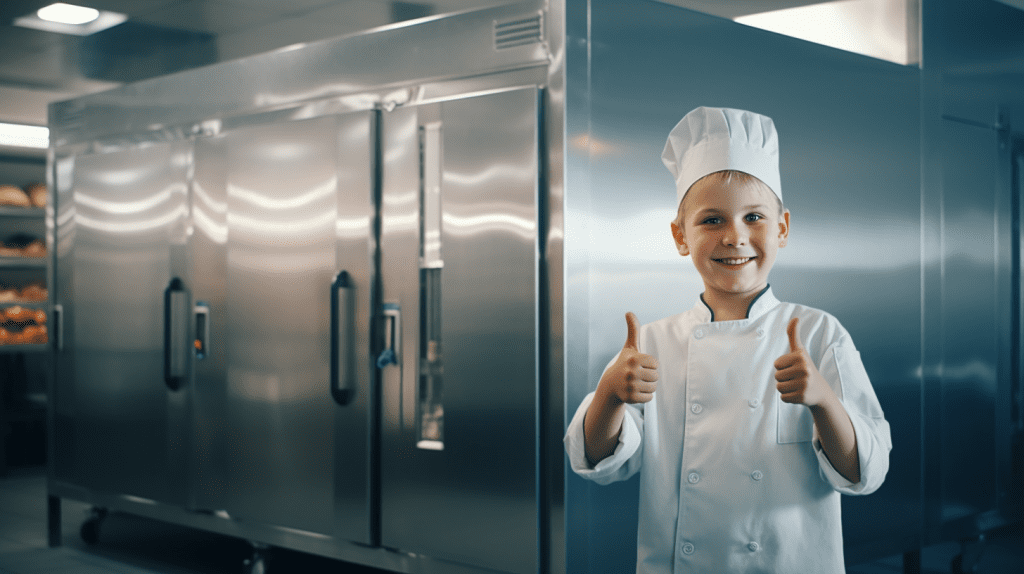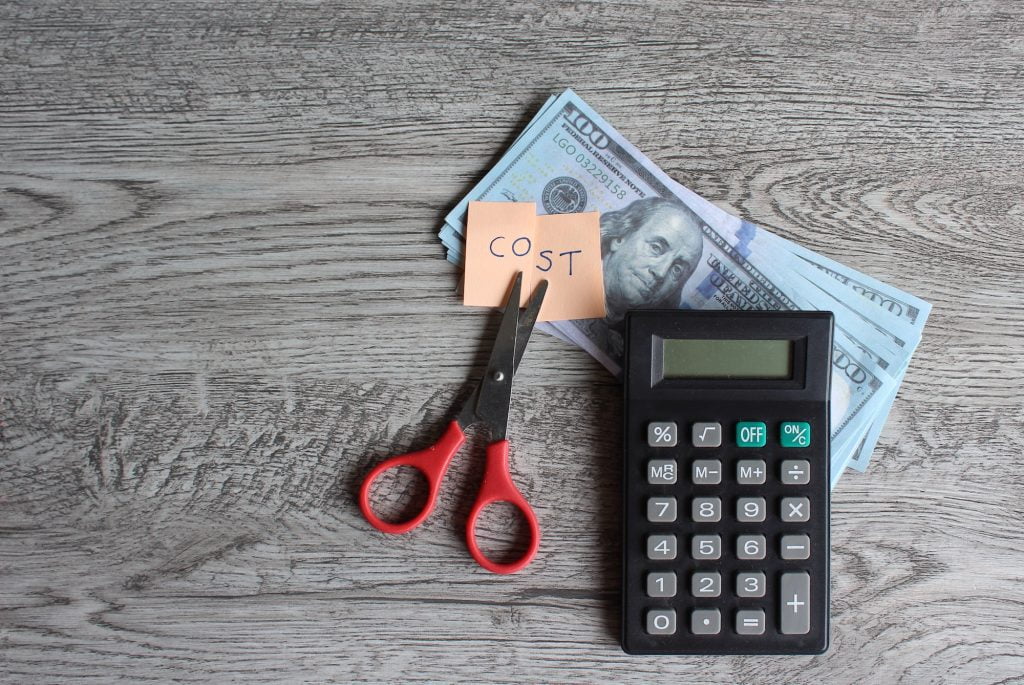Have you ever peered into your walk-in cooler and wondered if it’s chilly enough to keep your food fresh? 🥶 The proper temperature for a walk-in cooler can be the difference between that delicious brisket and a food safety nightmare. Understanding this can not only save your culinary masterpieces but also cut down on energy costs and compliance headaches. In this post, we’ll break down everything you need to know about the ideal temperature for your walk-in cooler, helping you keep it as cool as a cucumber!
Why Temperature Control is Crucial in Walk-In Coolers


Food Safety
We all know that food safety is of utmost importance. The last thing you want is for your signature gumbo to become a breeding ground for bacteria. Keeping your walk-in cooler at the right temperature is essential for preventing foodborne illnesses. When food is stored at temperatures above 41°F, the risk of bacteria growth increases. This can lead to all sorts of problems, like food poisoning or worse—customer complaints!
Regulatory Compliance
In our beautiful state of Texas, health regulations are as strict as grandma’s Sunday dinner rules. Federal and local health agencies require restaurants and food service establishments to maintain specific temperature ranges for safe food storage. Failure to comply can result in hefty fines or worse, closure of your beloved eatery. By keeping your walk-in cooler set to the recommended temperatures, you can stay on the right side of the law.
Operational Efficiency
Did you know that an inefficient walk-in cooler can significantly increase your energy bills? A cooler that’s overworked due to improper temperature settings will use more energy than necessary. This not only impacts your bottom line but can also shorten the lifespan of your cooling equipment. Maintaining the proper temperature ensures both food safety and operational efficiency, letting you focus on what really matters—serving great food!
What is the proper temperature for a walk-in cooler? General Guidelines


Recommended Range
When it comes to walk-in coolers, the sweet spot is typically between 35°F and 38°F. This range keeps most perishables fresh while minimizing energy consumption. For example, dairy products should ideally be stored at about 34°F, while meats perform best around 36°F. Remember, every degree counts—keeping your cooler tighter helps save energy and keeps your food safe.
Special Considerations for Various Foods
Not all foods are created equal, and their ideal storage temperatures vary. Here’s a breakdown of some common items:
- Dairy Products: Keep ‘em cold at 34°F.
- Meats: Aim for about 36°F for prime freshness.
- Produce: Most fruits and veggies thrive at 38°F to 40°F.
- Fish and Seafood: Store these delicate treasures around 32°F to 34°F.
This temperature precision is crucial. Just like you wouldn’t want to serve your chili too hot, you don’t want your food sitting in the danger zone either!
Factors Influencing Temperature Settings


Type of Stored Goods
The type of food you’re storing plays a huge role in determining your cooler’s temperature settings. Certain items, like frozen foods, need to be kept at 0°F or lower, while other perishables can thrive at slightly higher temps. Knowing your ingredients is key—talk to your suppliers and research the needs of each item!
Storage Duration
How long do you plan to keep those fresh veggies in storage? If you’re turning over stock quickly, you might not need to be as strict with your temperatures. However, longer-term storage means you need to pay closer attention to those optimal ranges to keep your food safe.
Volume and Air Flow
Overcrowding your walk-in cooler can lead to poor air circulation, resulting in temperature fluctuations. Think of it as a busy Houston freeway—when it’s jammed, everything slows down. Ensuring there’s adequate air flow not only helps maintain a stable temperature but also keeps every food item within the cooler at an even temp.
Monitoring and Maintaining Proper Temperature


Temperature Monitoring Tools
You wouldn’t head out into a Texas summer without checking the weather, so why would you neglect your walk-in cooler? Invest in reliable temperature monitoring tools such as thermometers, data loggers, and automated systems. These gadgets can alert you if temperatures stray from your set points, helping you avoid any nasty surprises.
Regular Maintenance
A walk-in cooler is like your trusty pickup truck; it needs regular maintenance to keep running smoothly. This includes cleaning the coils, defrosting when needed, and inspecting the door seals. A dirty condenser can cause your cooler to work harder, raising temperatures and energy bills.
Emergency Procedures
Sometimes the unexpected happens—a power outage or equipment malfunction. Have a plan in place! Ensure your staff knows how to monitor temperatures during emergencies and what steps to take if things heat up. A quick response can save your food and your business.
Energy Efficiency Considerations


Insulation Quality
In the hot Houston sun, solid insulation is a must! Quality insulation materials help keep the temperatures steady and minimize energy loss. If your cooler is drafting more than a Texas windstorm, you need to consider upgrading your insulation. XPS and urethane are popular options for preventing heat transfer and keeping your cooler chillier.
Door Management
Every time that door swings open, you lose cool air. Minimize door openings and install automatic closing mechanisms if possible. Think of it like Texas BBQ—keep those delicious ribs wrapped tight until it’s time to serve!
Energy-Efficient Equipment
Investing in energy-efficient refrigeration systems can pay off in the long run. Look for units that boast features like Smart Optics and Air-Flow Management Systems which regulate internal temps effectively while consuming less power. It’s like getting a two-for-one deal—saving the environment and your wallet!
The Costly Consequences of Improper Walk-In Cooler Temperatures 💰


Ever heard the saying, “A stitch in time saves nine?” Well, in the world of food storage, that couldn’t be more true! Let’s break it down with a real-life example that packs a punch. Imagine a bustling restaurant in Houston, “Tex-Mex Fiesta,” with a walk-in cooler that doesn’t maintain the ideal temperature of 36°F for meats and 34°F for dairy. If the cooler operates at an average of 45°F instead, it can lead to spoilage. Here’s the math:
If this restaurant stores 200 pounds of meat and 100 pounds of dairy, they could be looking at a potential loss of $800 if they need to throw it all out due to spoilage. How do we figure that? Well, say beef costs you about $4 per pound and cheese is around $3 per pound. That’s:
- Meat: 200 lbs x $4/lb = $800
- Dairy: 100 lbs x $3/lb = $300
In total, that’s $1,100 in food that could go bad in just one day due to improper cooler temperature. Now, let’s add the cost of wasted energy. An inefficient cooler also incurs extra energy costs—about 20% more than a properly functioning one. If the cooler normally runs at $150 per month, that’s an added $30 you’d be throwing away just to keep the temp at a level that isn’t safe for your food!
So, if you’re not asking yourself, “What is the proper temperature for a walk-in cooler?” you could be staring down a total loss of $1,130 each month! Not to mention the business reputation and customer trust that could go down the drain.
Keeping your walk-in cooler in the sweet spot between 35°F and 38°F isn’t just a suggestion; it’s essential for every restaurant, school cafeteria, grocery store, and event venue to avoid spoilage, maintain food quality, and protect your pocket.
🔥 So, are you ready to quiz yourself? What do you think the impact would be if our fictitious friends over at “Tex-Mex Fiesta” adjusted their equipment? Let’s hear your thoughts in the comments, and let’s keep the conversation flowing!
Final Thoughts


Keeping your walk-in cooler at the right temperature is no small feat, but it’s essential for food safety, energy efficiency, and regulatory compliance. By following the guidelines discussed above—maintaining a temperature between 35°F and 38°F, understanding the type of foods you’re storing, and regularly monitoring and maintaining your cooler—you can make sure your establishment runs smoothly and safely.
Remember, we’re all in this together. By optimizing your walk-in cooler’s temperature, you’re not only enhancing the quality of your food, but you’re also ensuring that your customers have the best dining experience possible.
Keep your cooler settings in check and be proactive! How often do you check your cooler’s temperature? Join our poll below and share your thoughts! 🌟
- Maintain temperatures between 35°F and 38°F.
- Consider food types and their specific needs.
- Use proper monitoring tools.
- Regularly maintain your cooler’s components.
- Invest in quality insulation and energy-efficient equipment.
For more tips and solutions, don’t hesitate to reach out to us at Unity Cooling Systems—your Houston source for all things refrigeration! We’re here to help you keep it cool!
FAQs


What is the ideal freezer temperature for frozen foods? ❄️
The optimal freezer temperature for most frozen foods is 0°F (-18°C). This keeps your food safely preserved without compromising quality. Setting your freezer correctly helps ensure your food products remain flavorful and safe to eat!
How do I maintain the temperature in my refrigerator and freezer? 📏
To maintain the right temperature, use a reliable thermostat. Regularly check your temperature logs to ensure everything’s running smoothly. If you notice fluctuations, consider adjusting the settings to keep it just right!
What is the recommended refrigeration temperature range for food storage? 🍗
For food safety, maintain your refrigerator’s temperature around 32°F to 40°F (0°C to 4°C). This range ensures that your food stays fresh while keeping spoilage at bay—just like keeping your BBQ sauce at the perfect consistency!
How does a walk-in freezer differ from a standard freezer? 🚪
A walk-in freezer provides ample space and is designed for commercial use, making it ideal for businesses. Unlike a typical home freezer, it can handle larger quantities of food products while maintaining a consistent temperature.
How can I check the temperature in my commercial refrigeration unit? 🔍
For accurate readings, invest in a temperature monitoring system. These high-tech units allow you to keep tabs on the temperature within your refrigerator or freezer without constantly opening the door. Just remember, each time you open that door, you let out more cool air!
Why is proper food storage crucial for food safety? 🥗
Improper food storage can lead to spoilage and health risks. It’s vital to understand how to store different food types within the optimal temperature ranges to protect both quality and safety.
How do I keep my commercial freezer performing optimally? 🔧
Regular maintenance is key. Don’t forget to clean the evaporator periodically and check the seals around the door—these small steps help ensure your unit runs efficiently. Plus, keeping that temperature near the door regulated helps prevent warm air from sneaking in!
What should I do if I want the refrigerator temperature to drop? 📉
If you notice your fridge is running warm, consider adjusting the thermostat to a lower setting. Monitor it closely with temperature logs until it stabilizes within the recommended range.
Can I store dairy products at 45 degrees Fahrenheit? 🧀
It’s best to store dairy at colder temperatures. Allowing dairy to flirt with 45°F can lead to spoilage, so always aim to keep it in the safe zones—between 34°F and 40°F for maximum freshness.
Feel free to reach out to us at Unity Cooling Systems if you have further questions or need assistance in keeping your refrigeration units running smoothly! And hey, what’s your go-to method for making sure your fridge doesn’t go rogue? Let us know! 🌟
Let’s Keep it Cool! 🌟🥶


Well, folks, if you’ve made it this far, you’re ready to take the plunge and step up your refrigeration game! Don’t let your food go around raisin’ temperatures like it’s summer in Houston—reach out to us at Unity Cooling Systems! We’re as local as a barbecue joint on a Saturday night, and we can help you keep your coolers in tip-top shape.
Need to chat? Give us a jingle at +1 (281) 818-5959 or connect with us on LinkedIn—we love to hear from our fellow Houstonians! And don’t forget to check out our treasure trove of tips and tricks on our YouTube channel.
We’re here to help you keep those temperatures just right—after all, we’re all in this together! So, what’s your favorite way to keep cool? Join our poll and let’s keep this conversation rolling! 🌈✨






